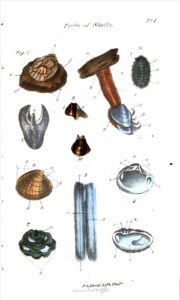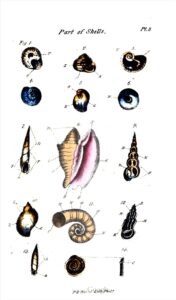It is hard for us to imagine just how precarious and uncertain Edgar Allan Poe felt his future to be when, in 1838, the twenty-eight-year-old poet, writer, critic, and editor moved his family from New York to Philadelphia. The emerging nation was in financial crisis amid an enduring recession fueled by a failure of banks and crop harvests that culminated in the “Panic of 1837.” Tensions were rising in a country whose growth increasingly depended on the evils of slavery and the “removal” of Native Americans from gold-rich (and plantation-ready) lands. The world of U.S. print culture, lacking any strong historical, legal, or cultural support for the profession of authorship, proved a chaotic space in which Poe was trying to build a fragile living based on credit, speculation, and debt. Only two years earlier, Poe had left behind the editorship of the influential Richmond Southern Literary Messenger, one of the few salaried jobs he would ever hold in his lifetime. There he had been fired for repeated episodes of drunkenness, a charge that would haunt him throughout his short lifetime. Fortunately for Poe, though, as he began to settle in with his family in their small Sixteenth Street house in Philadelphia, he was introduced to Thomas Wyatt, a Delaware schoolteacher who had recently published a large and successful textbook on conchology—the science and classification of shells.
Edgar Allan Poe: Pioneering Mollusk Scientist
Poe’s work reminds us that the separation of “Arts” and “Sciences” into discrete discourses of knowledge is itself a quite recent invention.
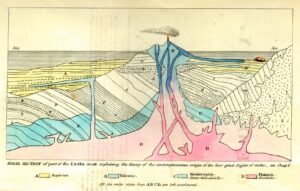
In the 1830s, the new science of geology was enjoying considerable worldwide interest, and Charles Lyell’s three volume Principles of Geology (1830-33) challenged biblical accounts of ancient history with its own creation narrative rooted in a “deep time” that far outstretched previous estimates of the earth’s age. Like the fascinating stories that rocks could now share with scientists, the study of shells—as similarly striated deposits of minerals—was also gaining momentum. Wyatt jumped on the opportunity to assemble his own American textbook on conchology, and in 1838 Harper & Brothers, a leading publishing house, snapped up the chance to publish his Manual of Conchology, according to the system laid down by Larmarck, with the late improvements by De Blainville.
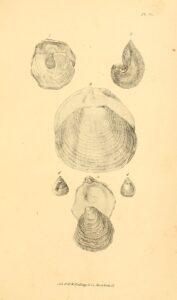
As its title suggests, Wyatt’s textbook compiled existing scientific materials, and, as John Tresch outlines in The Reason for the Darkness of the Night, the author also incorporated ideas from famed naturalist Georges Cuvier and Philadelphia publisher-scientist Isaac Lea. (Given the lack of strong international copyright laws, Wyatt also plagiarized large sections of text from Captain Thomas Brown’s The Conchologist’s Text-book that had recently been published in Glasgow in 1836.) Nevertheless, as historian of science Steven Jay Gould has documented, Wyatt’s textbook was still rather expensive (eight dollars) and unwieldy. “Sales were predictably slow, and Wyatt wished to produce a shorter edition with uncolored plates at a much lower price,” Gould notes. Wyatt’s publisher was not convinced, however, and “objected, citing a reasonable concern that its fancy edition would then become entirely unsellable. Wyatt, still wishing to proceed, but fearing legal action . . . sought a surrogate to help with his new volume and to serve as name-bearer for a flat fee.”

Although Edgar Allan Poe might seem like a strange choice for “surrogate man of science,” he had retained a fascination with (and training in) various branches of applied and theoretical science throughout his impressive schooling in England and Richmond, and later at the University of Virginia and West Point. Indeed, just before Poe arrived in Philadelphia, he had published a novel that provided its own unique blend of timely scientific speculation and (similarly plagiarized) primary source material: The Narrative of Arthur Gordon Pym of Nantucket (1838). It wasn’t unusual for Poe to review recent books of interest in natural history for the many journals he was associated with during his lifetime. For example, like many of his fellow Americans, Poe was intrigued by John Cleves Symmes Jr.’s theory that the earth was hollow at both its poles; and in a lengthy Messenger article of 1837 he wrote in support of funding an expedition to be led by J. V. Reynolds that would explore these and many other mysteries surrounding the polar extremes of the globe. When Poe composed his only novel the following year, he drew on some of these same polar fantasies while imagining Pym’s own bizarre expedition to the South Seas, and he incorporated (sometimes verbatim) reports from explorers such as Benjamin Morrell who had recently returned from these same alluring aqueous spaces.
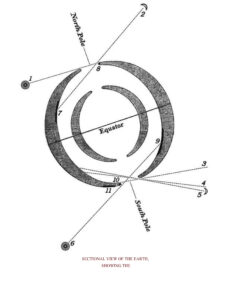
Poe’s work reminds us that the separation of “Arts” and “Sciences” into discrete discourses of knowledge is itself a quite recent invention. Indeed, what the eighteenth and nineteenth centuries understood by the term “natural history” incorporated a remarkably heterogenous array of enterprises and obsessions. In addition to Symmes’ hollow Earth theory that inspired the topography of his only novel, Poe’s fiction is filled with references to—and engagements with—an array of what today would be called both “scientific” and “pseudo-scientific” knowledge. For example, while Poe relied on (and footnoted) Archimedes when describing the fluid dynamics of the whirlpool swallowing up his protagonist’s ship at the conclusion of “A Descent Into the Maelström” (1841), his tales were also inspired by contemporaneous “pseudo-scientific” debates concerning mesmerism (animal magnetism) and phrenology (the study of skull shapes). Indeed, Poe even extended the central logic of phrenology in order to advance his own unique and playful “science”: published in a popular series of articles in Graham’s Magazine, Poe’s work on “Autography” interprets and analyzes the peaks and valleys found in the signatures of famous nineteenth-century literary figures, drawing cheeky conclusions about the character of the person behind the script. Viewed from our twenty-first century perspective, then, Poe’s fiction finds its home in the nebulous middle ground between hoax and official truth that existed before modern science could emerge as its own respectable and distinct discipline of knowledge.

From the perspective of Thomas Wyatt in 1838, however, Edgar Allan Poe was a perfectly suitable, affordable, and eager prospect who could help steer the new edition of his shell book into publication. While the full extent of Poe’s involvement as surrogate editor of Wyatt’s text isn’t easy to discern, scholars generally agree that, at the very least, Poe wrote a new introduction to the abridged textbook, reshaped the taxonomic categories under which it was organized, and likely added some of his own translated material (thanks to his schooling in French) from Cuvier. The abridged version of Wyatt’s textbook, now “authored” by Poe and published in Philadelphia by Haswell, Barrington, and Haswell, was titled The Conchologist’s First Book: A System of Testaceous Malacology. Unlike the vast majority of Poe’s work (Pym included), it was a considerable success. No other work attributed to Poe was reprinted during his lifetime: his shell book, however, sold out in two months and was reprinted twice in six years.
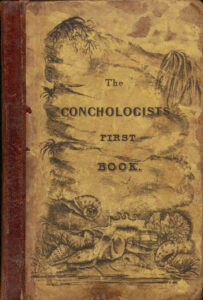
The Conchologist’s First Book remains something of a footnoted curiosity for most Poe scholars, noteworthy because of its relatively successful publication history and for the charges of plagiarism that would later be levelled at Poe regarding its composition. More recently, however, Poe’s shell book has gained renewed attention from prominent scholars in the history of science, as well as from specialists in a particular branch of science that Poe is now credited with helping to originate: malacology. I’ll close by giving you a sense of why Poe’s involvement in what Maxim Vinarski calls the “birth of malacology” is important not only because it brings to light an important moment in the development of American science but also for how it helps us to connect Poe’s vision of the natural world with the aesthetics of his gothic fiction.
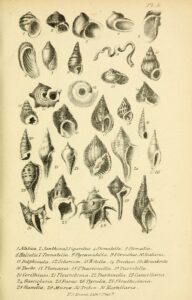
What is malacology, and how did Poe help to create this branch of modern science? When The Conchologist’s First Book was being assembled by Poe, a few scientists had recently begun to question why taxonomies of shelled animals tended to ignore the creatures that lived inside, instead focusing on the specifics of shell structure to organize and differentiate between these invertebrate animals. As Vinarski notes, before Cuvier “internal anatomy as a tool for classification of invertebrates was commonly ignored.” Indeed, it was only after Cuvier’s work in the 1790s that shelled and unshelled invertebrates were incorporated under the classificatory term we still use today: mollusks. (Malacology is the science of the study of mollusks.) When Poe was given the task of abridging Wyatt’s textbook, he not only cut some of its text and color plates (many of which had been plagiarized from Brown); he also decided to reorganize its decidedly shell-centered pages to foreground instead the “internal anatomy” of the animals inside the shell. Poe then translated descriptions of these animals from Cuvier to include alongside the descriptions of their shells, effectively converting Wyatt’s textbook from a conchological to a malacological study.
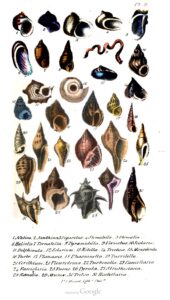
Poe was quite explicit about his intentions. “The common works upon this subject,” he wrote in the introduction to The Conchologist’s First Book, “appear to every person of science very essentially defective, inasmuch as [they ignore] the relations of the animal and shell, with their dependence upon each other” (3), choosing instead to focus their attention solely on the intricacies of the animal’s shell. As malacologist Matthias Glaubrecht notes, Poe “was among the first to recognize and comment that a reliable classification of mollusks requires a combined analysis, which meant in his times reconciling a system based on hard shells . . . with evidence from soft body anatomy” (3). What seems most important to Poe, then, is not so much the isolated complexities of either shell or animal: instead, he focuses our attention on the “relations” each forms with the other—a shared “dependence” that is capable of transforming the earth’s crust into a living and moving protective shell. Quoting another contemporary scientist who shared his renewed emphasis on the relations between animal and shell, Henri Marie Ducrotay de Blainville, Poe is fascinated with the ways that these seemingly micro-relational processes produce significant “changes upon the surface of the earth [that, in turn, alter] the superficial structure of the globe” (7-8).
As I have argued in more detail elsewhere, Poe’s own fascination with mollusks—and, in particular, with the micro-relationships animals establish with inert matter—is registered throughout The Narrative of Arthur Gordon Pym. (It is also hard not to think of The Conchologist’s First Book’s colored plates when Poe describes an eel-like sea monster with protruding eyes and tentacles in “The Thousand-and-Second Tale of Scheherazade” (1845).) Pym, for example, contains a famous extended digression concerning the importance of the echinoderm known as the “sea cucumber” to the economy and health of one of the islands its narrator visits. Although it lacks a shell, Poe is drawn to the way in which this mollusk still manages to move itself through the play of oppositional forces, and how the gelatinous material that can be harvested from within the mollusk’s body (typically by the sharp bill of a swallow) itself mobilizes a lucrative Chinese economic trade in edible birds nests that, in turn, are thought to heal and energize the human body when ingested. And even the form and plot of Poe’s novel is shaped by incidents through which inert, shell-like materials and vulnerable human animals enter into relationships of protection, even communication, with one another (such as the striations of rock found in mountains that collapse into hollowed out caves, or the space of vacant hulls created by the chaos of shipwrecked timber).
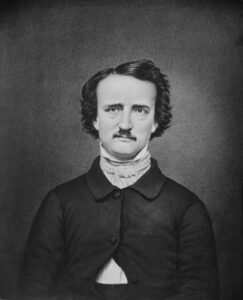
In a similar vein, the fifty dollars Poe is thought to have made from his shell book might also be said to have provided its own vulnerable “author” with some temporary—but nevertheless extremely welcome—protection from the vagaries of life as a professional writer in 1830s Philadelphia. In the remaining years before his untimely death a decade later, Poe’s work continued to flourish in the murky spaces in which theoretical science becomes indistinguishable from science fiction and the campy excesses of gothic horror. Indeed, his 1848 prose poem “Eureka” (considered by Poe to be his masterpiece) proposes numerous theories concerning the origins of the universe that have been viewed by some as legitimate precursors to Einsteinian science and Big Bang cosmology. Einstein himself was impressed, at least at first. But then, so the story goes, he realized he didn’t want to be scooped, and so wrote Poe off as a hack. As the epigraph to “The Thousand-and-Second Tale of Scheherazade” puts it, sometimes “Truth is Stranger than Fiction.”
Further Reading
Matthias Glaubrecht, “On ‘Darwinian Mysteries’ or Molluscs as Models in Evolutionary Biology: From Local Speciation to Global Radiation,” American Malacological Bulletin 27 (no. 1-2): 3-23.
Stephen Jay Gould, “Poe’s Greatest Hit,” Natural History 102 (no. 7, 1993): 10-19.
James D. Lilley, “Poe, Movement, and Matter: The Malacological Aesthetics of The Narrative of Arthur Gordon Pym,” Arizona Quarterly 73 (no. 4, 2017): 1-31.
Edgar Allan Poe, The Conchologist’s First Book: A System of Testaceous Malacology (Philadelphia: Haswell, Barrington, and Haswell, 1840).
John Tresch, The Reason for the Darkness of the Night: Edgar Allan Poe and the Forging of American Science (New York: Farrar, Strauss, and Giroux, 2021).
Maxim Vinarski, “The Birth of Malacology. When and How?” Zoosystematics and Evolution 90 (no. 1, 2014): 1-5.
This article originally appeared in November 2022.
James D. Lilley is Associate Professor of English and Director of Graduate Studies at the University at Albany, New York, where he teaches and publishes work in eighteenth- and nineteenth-century British, American, and transatlantic studies. He is currently working on a number of Poe projects, including a book on Poe and philosophy.



